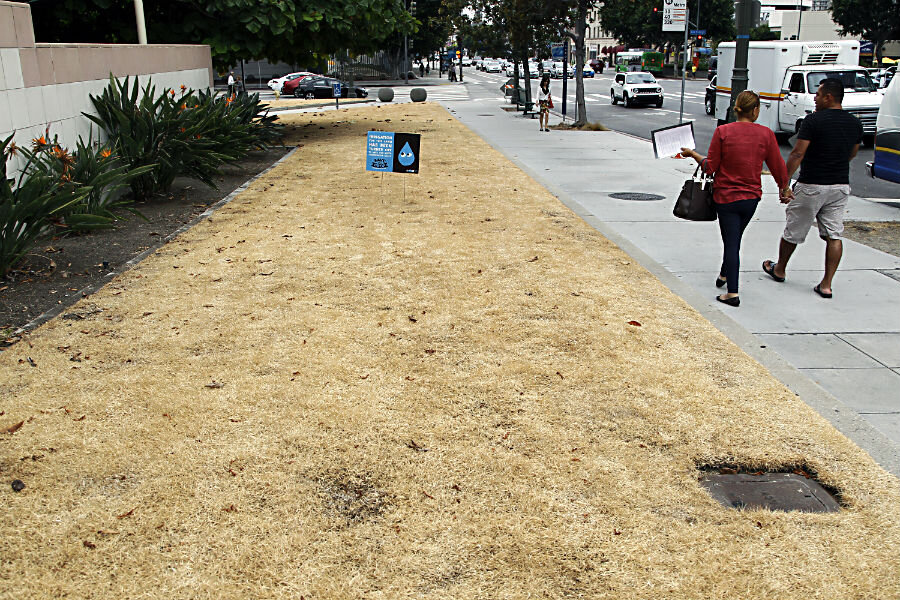With all this rain, why is California extending its drought emergency?
Despite the recent heavy rains and snowfall throughout the state, California will extend its emergency water conservation measures in response to its ongoing drought.
The State Water Resources Control Board voted to continue the water-saving efforts that California adopted in 2014 and that were extended last year. With the passage of the resolution, the current water regulations will continue through October, with some changes.
The measures recommended by the state water board Tuesday include considerations for urban water suppliers based on their location and climate, the population growth in their area, any investments made in new water supply sources, and how agricultural efforts relate to their total production. The revised policy would also add penalties for community groups that interfere with individuals’ water conservation in their lawns or gardens.
California has been in a drought state of emergency since 2014. The state went through the driest four years in its history from 2012 to 2015, and has adopted several resolutions and executive orders regarding water use during the drought including a proposal to reduce its total water usage by 25 percent by the end of this month.
Since that resolution was passed last spring, Californians have used 25.5 percent less water than they did during the same period in 2013, which sets the state up to meet its goal of 1.2 million acre-feet of water – about 400 billion gallons – saved through the month of February.
Even so, conservation efforts in November and December fell short of the 25 percent goal. November saw a 20.4 percent saving while December had only an 18.3 percent conservation rate. The average residential water use in December was only 67 gallons though, the second-lowest amount reported since the drought began.
Water regulators are now looking ahead to April, when California typically sees a snowpack runoff from the Sierra Nevada mountains. With the amount of precipitation El Niño storms brought to the West Coast this season, the spring melt could help to ease drought conditions by refilling reservoirs, rivers, and other bodies of water throughout the state. But officials are still not sure how much this year’s snowpack will end up alleviating the drought.
“While the recent rains and growing snowpack are wonderful to behold, we won’t know until spring what effect it will have on the bottom line for California’s unprecedented drought,” said Felicia Marcus, chair of the state water control board, in an agency press release.
“Until we can tally that ledger, we have to keep conserving water every way we can,” she said. “Every drop saved today is one that we may be very glad we have tomorrow.”
The Associated Press reported that the state snowpack was at 130 percent of its seasonal average, as of Tuesday.
“It's certainly a very encouraging start to the winter,” Frank Gehrke, chief of the California Cooperative Snow Surveys Program, told the AP, although he said the snowpack will need continued storms and precipitation to maintain its water content for the coming melt in order to potentially make a difference in the drought.





